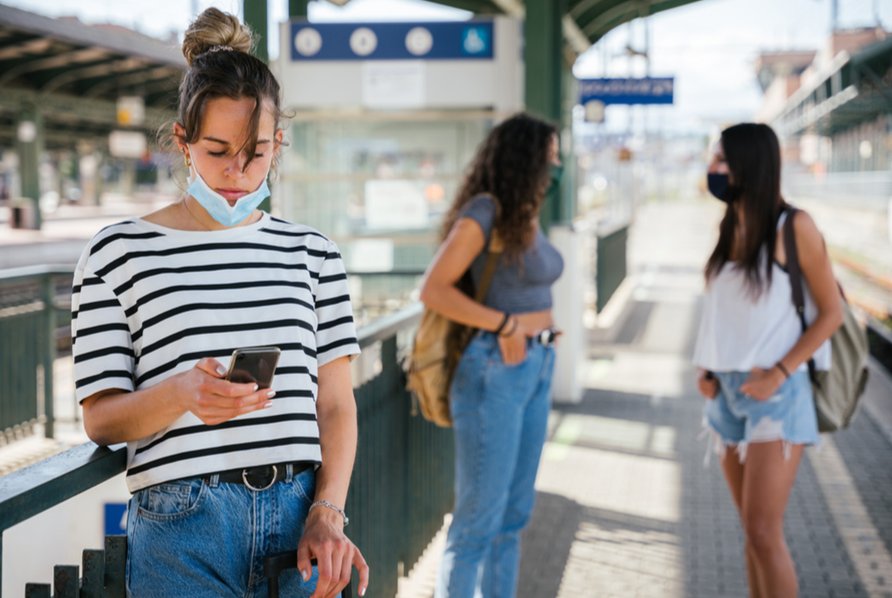Mobility Special: The Future of mobility
Good access is something we’ve been working on for some time in Zuidas, since well before the pandemic. Green Business Club Zuidas, which is at the forefront of these efforts, has recently noticed that initiatives which once struggled for acceptance – bike incentives, avoiding rush hour, teleworking – are becoming the new normal. This could be a great opportunity to rethink how we organize our mobility. Within GBC Zuidas there has been extensive discussion these past months about how that might be achieved. The City of Amsterdam and Dutch Railways (NS) for instance have been working together to map out employer needs and initiate an area-wide action plan. Another partnership is with VU Amsterdam in a project to reduce congestion on public transport and bike lanes. Hello Zuidas talked about these efforts with Irma Winkenius, regional director at the NS, and Stefan Titus, Campus Development Programme secretary at VU Amsterdam.
MOBILITY SPECIAL HYPER-GRIDLOCK
Before the coronavirus crisis, the NS and VU Amsterdam were already working together to tackle hyper-gridlock. With passenger volumes rising, the objective was to achieve a more even distribution. ‘The crux of the problem was area development in Zuidas, on the one hand, and more trains and connections, on the other’, explains Winkenius. Titus adds, ‘Amsterdam Zuid Station has been a bottleneck for quite some years, with a massive flow of passengers. Both the numbers of students at VU Amsterdam and commuters in Zuidas are rising. Distribution and diversification of that traffic are crucial. Also key to note is that only 2% of our staff come to work by car. That’s great, but it also means public transport and the capacity of that system is really paramount for us.’

TARGETED AGREEMENTS
After the outbreak of COVID-19, the situation changed completely. Suddenly trains were empty, bike lanes quiet and classrooms moved online. At the same time, spreading out travel seemed more essential than ever. Winkenius explains, ‘The challenge is figuring out how to stagger that travel. With education institutions, we’ve worked out targeted agreements for education and public transport in Amsterdam, based on agreements made at the national level. These focus on staggering the beginning and end times of education activities to reduce peaks during morning and evening rush hours.’ Titus: That wasn’t always easy, because besides considering what’s in the interests of the public in terms of transport capacity, we also had to deal with our own limited capacity on campus, with everyone having to keep 1,5 metres distance. At the moment we’re offering only 25% of our normal in-person teaching to ensure a better distribution over the day. This way we maximize the limited campus capacity and we help to spread the amount of travelers in public transport over the day.’
STAGGERED TRAVEL
The developments we’re seeing now all stem directly from the coronavirus. But we also need to avoid a return to hyper-gridlock in the post-corona era. This period is proof that it can be done and that working together – whatever the circumstances – can generate lots of creative solutions. ‘VU has a responsibility to help ensure the safety of public transport for wider society without limiting our campus capacity for teaching and research’, says Titus. ‘However, we’ve also stressed that this responsibility shouldn’t just apply to education institutions, but to employers as well to the best of our ability’, says Titus. ‘However, we’ve also stressed that this responsibility shouldn’t just apply to education institutions, but to employers as well. The City of Amsterdam has been very good about taking this up, resulting in the signing of a declaration of intent by employers in which they also commit to staggering working hours as much as possible.’ Winkenius continues, ‘Over the past months we’ve talked with many companies and organizations, including VU Amsterdam, about spreading commuters out over the day and physical distancing. Employers are struggling with the 1,5 metre rule in offices and preventing crowding around entrances and lifts. Staggering when people work across the day and the week will be the key to preventing problems. That will automatically also result in a more even spread of journeys, which is exactly what we want.’The important thing now is that the employers act quickly and use this signed declaration of intent as the basis for drawing up concrete measures. So that in future people will be able to travel safely on public transport and safeguards will be in place to ensure continued access to all of the companies involved.

REGISTER YOUR TRAIN JOURNEYS
The NS has come up with various possible measures, also factoring in that not everyone has to stagger their hours – although the more, the better. One option would be to register your train journeys in advance. ‘We think it would be very effective to link the workspace reservation many companies already make to the NS crowding indicator app. Employees could register both a workspace and a journey in one go. That would enable the NS to inform them about expected crowding and possibly offer an alternative travel recommendation’, Winkenius finishes enthusiastically.
